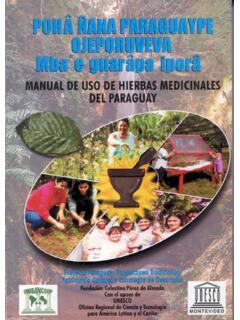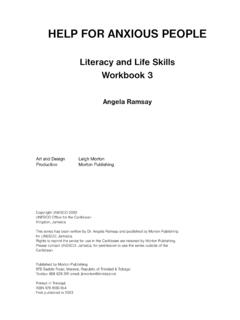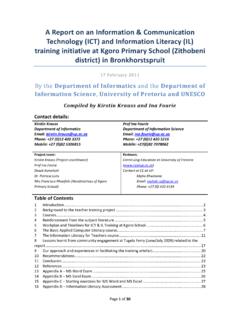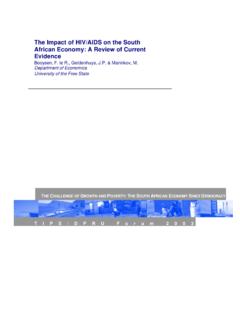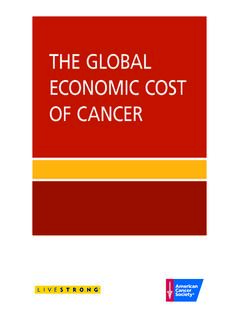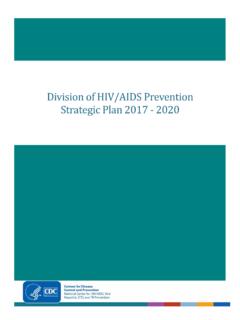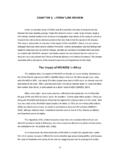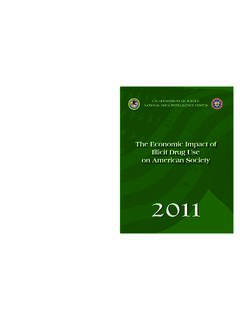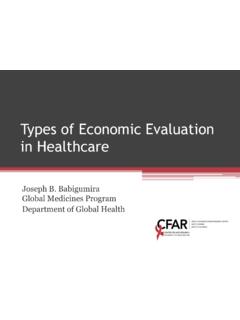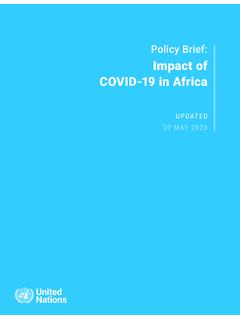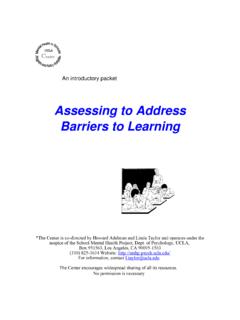Transcription of The Impact of HIV/AIDS on Education - UNESCO
1 UNESCOS ection for Preventive EducationThe Impact of HIV/AIDS on Educationa review of literature and experienceby Sheldon Shaeffer1994 Commissioned by the UNESCO Programme of Education for the prevention of aids withsupport from the Swedish International Development Authority (SIDA)Table of Contents1 1A. aids and Social- economic Development .. 1B. The Differential Impact of hiv .. 5C. The role of Education .. 8II Impact on the Effectiveness of Education .. 10A. A more open system .. 10B. A more integrated message in a more flexible system.
2 11 III Impact of HIV/AIDS on Demand, Supply, and Process .. 13A. Demand .. 13B. The Supply of Education .. 20C. The Process of Education .. 22D. The quality and quantity of Education .. 23IV Impact on the Education System: How It Responds to HIV/AIDS .. 25A. The clients and roles of the system .. 25B. Operations of the system .. 28C. Content and methods of Education .. 29D. Planning and Management of the System .. 30V Implications of the Impact of HIV/AIDS for Training, Research, and Donor ProgrammingA. Training .. 38B.
3 Research .. 39C. Programming of donors .. 39 References .. 41 IIntroduction ..the aids pandemic confronts us with a full range of development issues .. issues of poverty,entitlement and access to food, medical care and income, the relationships between men andwomen, the relative abilities of states to provide security and services for their people, therelations between the rich and the poor within society and between rich and poor societies, theviability of different forms of rural production, the survival strategies of different types ofhousehold and community.
4 All impinge upon a consideration of the ways in which an epidemicsuch as this affects societies and economies" (Barnett and Blaikie 1992:5)."Across Africa, evidence for the seriousness downstream effects is accumulating rapidly;given the nature of the disease and the shape of the epidemic curve .., now is the time to takeaction to mitigate the worst effects in the next two decades. Because this is a long wave disaster,.. the effects we are seeing now in Uganda and elsewhere are the result of events (personal,communal, regional, national, and international) that occurred a decade or more ago.
5 Actiontaken now cannot change the present, nor can it change the immediate future. It can change theway the situation will look in the years after 2010" (Barnett and Blaikie 1992:167).A. aids and Social- economic DevelopmentThe statistics are impressive: 40 million (or perhaps 100 million, 2% of the world's population)infected with HIV by the end of the decade; seropositivity rates of 10% 20% - even 30% amongcertain population groups (by age, place of residence, nationality, or gender); increasing aids -related mortality rates; perhaps 2/3 of those infected living in sub-Saharan Africa, with onemillion (perhaps many more) already infected in India and hundreds of thousands more inSoutheast Asia.
6 The problem is that as long as these issues are discussed largely in terms ofstatistics, they remain issues in the abstract. This is especially true (and dangerous) when thenumbers remain relatively small in the developed world (particularly when compared to someearlier predictions), thus lulling it into a false sense of security and leading to the debate over the"myth of aids ". The need, therefore, is to go beyond the mere numbers and percentages of theinfected, ill, and dead to the Impact that such numbers will have on individuals, families,communities, and nations.
7 Perhaps it is only with clearer evidence of such Impact - anecdotal anddescriptive, as well as statistical - that the magnitude of hiv and aids will become apparentand that all nations of the world and all sectors of society - even those not now visibly affected -will realize that the epidemic is their concern and not someone else' such evidence concerning the Impact of hiv infection and aids on the development bothof communities and of nations is beginning to appear. The Impact in many regions of the worldis already widespread, profound, and complex - and promises to be even more so in the subsequent scenarios being written for the future of heavily affected regions of the world -and for some only now beginning to be affected - are quite devastating.
8 And they come at a timewhen many societies, because of recession, debt, war, and natural disaster, are simply unable tocope with the "routine" demands of development let alone assess the Impact of aids andrespond effectively to it. (See Cohen ; Miller and Rockwell 1988; Nabarro and McConnell1989; Armstrong and Bos 1992; African Development Bank Group 1993; NORAD 1991; Reid1992; Panos Institute 1992; World Bank and the University of Dar es Salaam 1993).The gravity of the situation is often reinforced by the feeding of one crisis by another.
9 Thus, economic recession, drought, and conflict "aggravate the transmission, spread, and control ofHIV two major ways: directly by increasing the population at risk throughincreased urban migration, poverty, women's powerlessness, and prostitution, and indirectlythrough a decrease in health care provision" (Sanders and Sambo 1992:32). The Impact thengrows exponentially, from one sector to another, one level of society to another, one nation andregion to aspect of this is the sheer Impact on population. Although one estimate for an aggregate of15 relatively heavily affected countries in sub-Saharan Africa showed that population will stilldouble between 1980 and 2005, the projected increase will be 4 per cent less than what would beexpected in the absence of aids .
10 Another estimate claims that the population of an average sub-Saharan Africa nation will be smaller in 2020 than would have been the case in the absenceof aids (African Development Bank Group 1993b: 16). In some countries the expectedpopulation size may be reduced by considerably more - in Zambia by 12% and in Uganda by 8%(Population Newsletter 1992).The Impact on the individuals, families, and communities which lie behind these numbers, at themicro-level of society, can also be immense. People fall ill, cannot work, and lose income.

